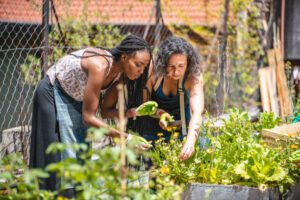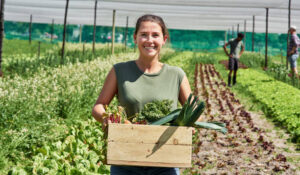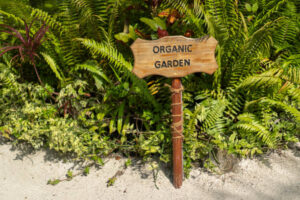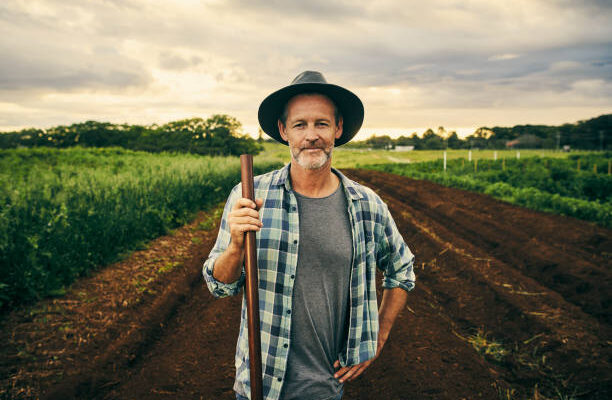In an age dominated by urban landscapes and digital connectivity, homesteading represents a nostalgic return to the roots of self-sufficiency and a sustainable way of life. Homesteading, once a vital means of survival for early American settlers, is experiencing a renaissance in the 21st century. This article explores the concept of homesteading, its history, principles. And the modern homesteading movement.
What is Homesteading?
Homesteading is a lifestyle and philosophy cantered around self-sufficiency, sustainability. And a deep connection with the land. Homesteaders seek to reduce their reliance on external systems and instead produce their own food, energy, and resources.
While homesteading can vary in scale and approach, the core principles remain consistent:
-
Self-Sufficiency
 (Photo from iStock)
(Photo from iStock)
Self-sufficiency lies at the heart of homesteading. It involves producing one’s own food, generating energy, and acquiring essential resources independently or with minimal reliance on external sources. This principle is rooted in the desire for autonomy and resilience in the face of economic or environmental challenges.
-
Sustainability
Homesteaders prioritize sustainable practices that protect and enhance the natural environment. This includes responsible land management, organic farming, and eco-friendly energy solutions. Sustainability not only benefits the homesteader. But also contributes to the long-term health of the planet.
-
Simple Living
Homesteading often involves a commitment to simple living. By reducing consumption and focusing on necessities, homesteaders aim to minimize their environmental footprint and improve their quality of life. This can lead to a greater sense of fulfilment and freedom.
-
Community and Sharing
While homesteading emphasizes self-sufficiency, it also values community and sharing. Many homesteaders participate in bartering, local markets. So, cooperative efforts to strengthen community bonds and exchange resources and knowledge.
A Brief History of Homesteading
Homesteading has a rich history deeply intertwined with the development of the United States and other countries. Its roots can be traced back to various historical periods and regions:
-
American Homesteading
In the 19th century, the United States government initiated the Homestead Acts, a series of laws that provided 160 acres of public land to settlers who improved the land by building a dwelling and cultivating crops. This policy was aimed at encouraging westward expansion and promoting agricultural development. It led to the establishment of countless homesteads across the American frontier.
-
Canadian Homesteading
Canada also had its own version of homesteading, particularly in the Prairie provinces. The Dominion Lands Act of 1872 allowed settlers to acquire 160 acres of land for a small fee, provided they built a home and cultivated the land within three years.
-
Contemporary Homesteading
 (Photo from iStock)
(Photo from iStock)
While the historical context of homesteading is fascinating, contemporary homesteading takes a different form. It’s no longer driven by the need to conquer new territories but rather by a desire to live sustainably, independently, and closer to nature. Today’s homesteaders are as likely to be found in rural areas as in suburban or even urban settings.
Homesteading Principles in Practice
Homesteading principles are applied in various ways to achieve self-sufficiency and sustainability. Here are some key practices that modern homesteaders embrace:
-
Gardening and Farming
Growing one’s own food is a fundamental aspect of homesteading. Homesteaders often maintain gardens, orchards, and livestock to produce fruits, vegetables, eggs, dairy, and meat. Many practice organic and permaculture methods to minimize environmental impact.
-
Energy Independence
 (Photo from iStock)
(Photo from iStock)
Homesteaders explore alternative energy sources such as solar panels, wind turbines, and hydroelectric generators to reduce their reliance on the grid. This not only lowers energy bills but also minimizes their carbon footprint.
-
Sustainable Building
Homesteaders frequently engage in sustainable building practices. They construct energy-efficient homes using natural materials like straw bales, adobe, or reclaimed wood. Rainwater harvesting and composting toilets are also common features.
-
Food Preservation
 (Photo from iStock)
(Photo from iStock)
To ensure a year-round supply of food, homesteaders often practice food preservation techniques such as canning, drying, fermenting, and root cellaring. Because these help to reduce waste and reliance on store-bought groceries.
-
Livestock and Animal Husbandry
Raising animals like chickens, goats, rabbits, or bees provides homesteaders with meat, dairy, eggs, and honey. Proper animal husbandry practices prioritize the welfare of the animals and their contribution to the homestead.
The Modern Homesteading Movement
In recent years, the modern homesteading movement has gained momentum. This resurgence can be attributed to several factors:
-
Concerns about Sustainability
Growing concerns about climate change, resource depletion, and environmental degradation have led many people to seek sustainable alternatives to conventional living.
-
Desire for Self-Sufficiency
The desire for greater self-sufficiency and independence is a significant driver of the modern homesteading movement. The global economic landscape, with its uncertainties, has spurred people to explore self-reliant lifestyles.
-
Health and Wellness Trends
 (Photo from iStock)
(Photo from iStock)
The emphasis on organic, locally sourced, and non-GMO foods has aligned with the principles of homesteading, attracting individuals who prioritize health and wellness.
-
Information Accessibility
The internet and social media have made it easier for aspiring homesteaders to access information, connect with like-minded individuals, and learn from experienced homesteaders.
-
Pandemic Resilience
The COVID-19 pandemic exposed vulnerabilities in centralized supply chains. Many individuals turned to self sufficiency as a means of ensuring a stable food supply during lockdowns.
Tips for Aspiring Homesteaders If you’re considering homesteading, here are some tips to help you get started:
-
Research and Education
Take the time to research and educate yourself about the specific aspects of it that interest you. Books, online resources, and local workshops are valuable learning tools.
-
Start Small
 (Photo from iStock)
(Photo from iStock)
Begin with manageable projects, such as a small vegetable garden or backyard chickens, before scaling up to more ambitious endeavours.
-
Build a Support Network
Connect with experienced homesteaders, join online forums or local homesteading groups. And seek mentorship to learn from others’ experiences.
-
Set Realistic Goals
Set achievable goals for your homestead, considering your available time, resources, and skill level. But, be prepared for setbacks and challenges along the way.
-
Embrace the Learning Process
Homesteading is a continuous learning process. Above all embrace mistakes as opportunities for growth and improvement.
Conclusion
Homesteading offers a path to a more sustainable, self-sufficient, and fulfilling way of life. While it presents challenges, the rewards of increased self-reliance. Because of their deeper connection with nature. Additionally, a reduced environmental footprint make it an appealing choice for many. As the modern movement continues to grow, more individuals are rediscovering the beauty. And practicality of living close to the land, forging a new path to self-sufficiency in the 21st century.
Reference:
Homesteading
Want some amazing jewellery making ideas, that too at your home, what are you waiting for?, click on the link below:
Homemade Jewellery making for kids




